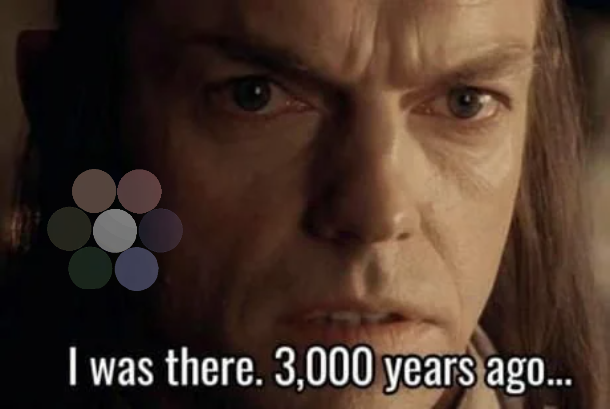Nobody’s “souls” matter anymore. The world is completely fucked and our physical bodies are going to be going through the ringer very soon. I hope you’re on the right side of the people who can now do whatever they want with absolutely no guardrails. Otherwise you’re about to REALLY experience solidarity.
When I get bored with the conversation/tired of arguing I will simply tersely agree with you and then stop responding. I’m too old for this stuff.
- 7 Posts
- 100 Comments
If it’s any consolation you and everyone else are likely to get a firsthand lesson in it in the near future.
Now EVERYONE is fucked. Congrats!

 1·19 days ago
1·19 days agoBiological generative intelligence

 7·20 days ago
7·20 days agoBut first he will accidentally the whole thing.
 19·25 days ago
19·25 days agoShe’s right about one thing…
That $17000 dollars is gone and not coming back.

 151·27 days ago
151·27 days agoYes, which is intentionally being stonewalled by manufacturers who enjoy being able to force their old models into obsolescence at their whim. There are only a handful of market players with essentially a stranglehold on the market, and they could EASILY coordinate on a set of standards that SoC developers need to conform to to be considered for product launches if we didn’t live in a corporate driven techno-dystopia.

 1·27 days ago
1·27 days agoYeah. Valve invented most of the attention direction techniques for Half-life (light, motion, etc, etc.) Trailblazers.

 474·27 days ago
474·27 days agoThis again???
DECOUPLE THE OPERATING SYSTEM FROM THE HARDWARE THE WAY PCS HAVE ALWAYS BEEN SO THEY CAN BE UPGRADED IN PERPETUITY UNTIL THE HARDWARE ISN’T POWERFUL ENOUGH ANYMORE.

 22·28 days ago
22·28 days ago“Let’s give them lots of player freedom this time!”
Play testers continually don’t look at a set piece vista the developers and artists spent 400 hours creating.
“Well, that’s enough of that. Back to the rails.”

 3·29 days ago
3·29 days ago

 11·30 days ago
11·30 days agoIf they have proof of that, more power to them, but at this point the only evidence I’ve seen in the case of Ryujinx is Nintendo making wild accusations. Maybe they have a case, maybe they don’t. In either case, “But the game piracy…” is not and has never been a valid defense of Nintendo’s actions.

 4·30 days ago
4·30 days agoThat is completely irrelevant. Piracy is already illegal. If you pirate software you can be jailed and/or sued.
Emulation development, however, is completely legal and protected by law and precedent.

 8·30 days ago
8·30 days agoIt’s not about either of those. A system emulator is nothing more than a program that converts the hardware instructions of one piece of hardware to another. What you DO with that can be legal or illegal, but the emulator ITSELF is totally legal and requires no justification.

 441·30 days ago
441·30 days agoWhy do people not understand that piracy is COMPLETELY AND TOTALLY irrelevant to the LEGALITY of emulation?
There is no “Oh, but Nintendo was losing money…”
My electric company loses money when I generate solar power. That doesn’t give them the legal right to come to my house and rip out my panels.
The established legal FACT is that emulation is LEGAL.
“But the pirates…”
No, shut up. Emulation is LEGAL. Making and distributing an emulator is LEGAL. And the best way to LOSE that legal right is to misunderstand that you have it and make the public think that there’s some legal gray area here. There isn’t.
You know what’s illegal? PIRACY. And Nintendo has every legal right to go after PIRATES. They DON’T have the legal right to stop development of system emulators. Stop with this nonsense justification, because there isn’t one. Nintendo is not legally right on ANY aspect of this.
Repeat after me:
CREATING AND DISTRIBUTING EMULATORS IS COMPLETELY LEGAL BY ESTABLISHED LAW AND LEGAL PRECEDENT AND NINTENDO ILLEGALLY EXTORTED SOMEONE INTO STOPPING A PROJECT.

 321·1 month ago
321·1 month ago“Your honor, rather than pay his outstanding debts, this shiftless f***wit used 75 million dollars to fund a SuperPAC to bother people at their homes for the benefit of the Trump campaign.”

 141·1 month ago
141·1 month agoNot the original, but…

 151·1 month ago
151·1 month ago
Absolutely. It’s sucked a lot longer than that.
I’ll never forget those glazed eyes…



I’ve learned no lesson. I secured a permanent residency abroad the first time this chucklefuck was in office, and I’ve already bought my plane ticket out. I feel so, so awful for people who voted reasonably and are stuck there, and I encourage everyone who can to get out now, but I’ll be damned if I’m going to let the self-righteous attitudes of people with no sense try to punish me for exercising logic.